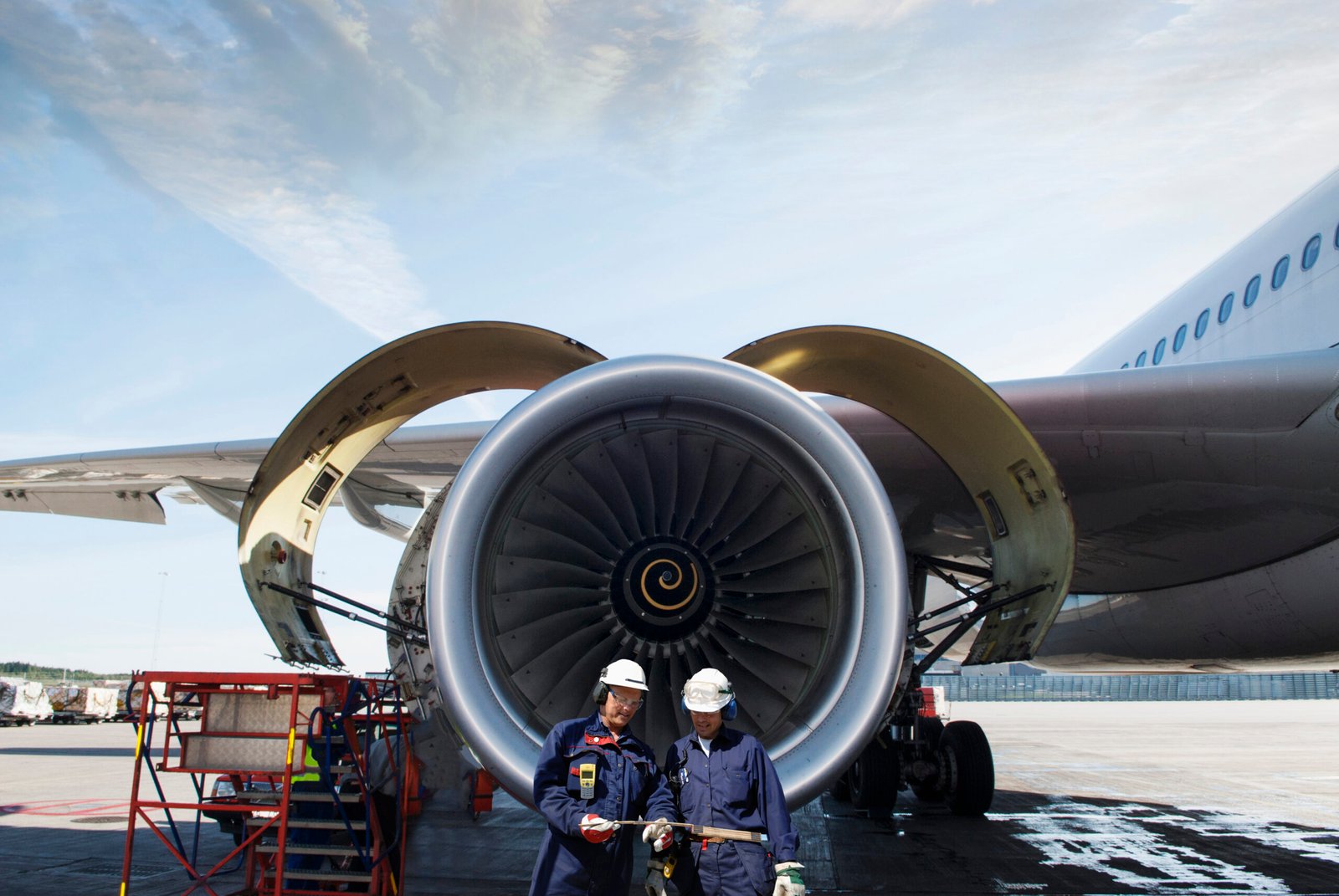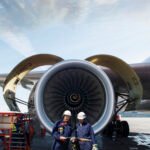Categories
The Sky’s the Limit: Exploring the Most Scenic Flight Routes Around the World
When we think of aviation, images of planes soaring through endless blue skies often come to mind. But there’s more to flight than just reaching a destination; it’s about the journey itself. For those passionate about flying, whether as commercial pilots or hobbyists navigating remote-controlled drones, embarking on scenic flight routes can be a breathtaking experience.
For aspiring aviators, starting with pilot training is essential. Various programs offer comprehensive education for those eager to take to the skies. These training modules not only prepare individuals for their private and commercial licenses but also introduce them to advanced techniques that enhance safety and navigation skills. Additionally, many institutions now provide specialized courses in RC drone piloting, catering to both recreational enthusiasts and those looking at professional careers in drone operations. With technology evolving rapidly, drone pilots are increasingly sought after in fields such as photography, surveying, and even agricultural monitoring. The blend of traditional aviation training with cutting-edge drone education creates a diverse talent pool ready for exploration.
Once flight training wraps up and you’re itching for adventure, consider your options for scenic routes. From the majestic fjords of Norway to the vibrant landscapes of New Zealand’s South Island, countless breathtaking vistas await above the clouds. One iconic route includes flying over the Grand Canyon—an aerial perspective reveals its vastness while showcasing its layered rock formations that tell stories millions of years in the making. Another stunning option is traversing along California’s Pacific Coast Highway; witnessing rugged cliffs meeting azure waves is an unforgettable sight from above.
However, before taking off on these picturesque journeys, securing appropriate aviation insurance is crucial. Whether you’re a seasoned pilot or just starting out with your first drone, understanding insurance coverage can save you from potential headaches down the line. Various companies specialize in aviation insurance policies tailored specifically for different needs—ranging from hull coverage for aircraft to liability protection for drones used commercially.
Rates can vary significantly based on factors like aircraft type or operational use; thus it’s wise to shop around and compare quotes from multiple providers before committing to a policy. Some companies even offer packages that bundle general liability with hull insurance at competitive rates—a practical choice for those operating multiple aircraft or drones.
In summary, whether you’re eyeing a career in traditional piloting or exploring uncharted territories with an RC drone, numerous pathways lead into this exhilarating world of aviation. Enrolling in reputable flight training programs sets you on course toward mastering essential skills while unlocking opportunities that lie beyond mere travel.
As every seasoned pilot knows: “The sky’s truly the limit.” So why not take advantage? Dive into training today and soon enough you’ll find yourself charting new territories amid stunning landscapes high above Earth—a rewarding fusion of passion and profession awaits!

Skybound Adventures: Exploring Unusual Flight Paths Around the World
The world of aviation is a vast and exhilarating realm, brimming with fascinating opportunities for those daring enough to explore its heights. From aspiring pilots to aviation enthusiasts, the journey begins with education and knowledge. Let’s take a look at the various avenues available in aviation schools, delve into popular aviation blogs and websites, and discover FAA-approved flight schools and simulators that can help you kick-start your skyward adventure.
### Types of Aviation Courses
Aviation education comes in many flavors, catering to diverse interests within the field. Here are some common types of courses offered by aviation schools:
1. **Private Pilot License (PPL)**: This foundational course introduces students to fundamental flying skills, regulations, and navigation techniques necessary for piloting light aircraft.
2. **Commercial Pilot License (CPL)**: For those aiming for a career in aviation, this course builds on previous training and focuses on advanced flying skills needed for commercial operations.

3. **Airline Transport Pilot License (ATPL)**: The pinnacle of pilot certifications, ATPL programs prepare students for commanding large passenger jets or cargo aircraft.
4. **Aircraft Maintenance Engineering**: A vital aspect of aviation involves maintaining aircraft safety and performance. Programs here cover repair techniques, systems management, and regulatory compliance.
5. **Aviation Management**: More than just flying planes, this course dives into the business side of aviation—handling operations, marketing strategies, and financial management within an airline context.
6. **Flight Dispatching**: This unique program trains individuals to manage flight plans while ensuring safety regulations are adhered to before takeoff.
7. **Aeronautical Science**: Focusing on the theoretical aspects of flight dynamics and engineering principles; it’s perfect for those interested in pursuing careers as aeronautical engineers or researchers.
### Must-Visit Aviation Blogs & Websites
The digital landscape offers treasure troves of information about all things aviation! Here are some must-follow blogs and websites that fuel your passion:
**Airliners.net**: An extensive community where enthusiasts share photos, trip reports, and discussions regarding airlines worldwide.
**Flying Magazine**: Offers articles on piloting techniques, gear reviews, safety tips, industry news—everything a pilot needs!
**AVweb**: A rich source for news related to general aviation including podcasts that keep you updated while you’re on-the-go.
**Plane & Pilot Magazine**: Focuses specifically on user-friendly insights into small aircraft with practical advice tailored toward pilots.
**The Points Guy**: Perfect for those who love traveling by air but want to maximize their miles; it provides tips on travel hacking using frequent flyer programs effectively.
### FAA Flight Schools & Simulators
If you’re ready to take your passion from theory to practice through FAA-approved training institutions or simulators tailored towards budding aviators:
1. **ATP Flight School**: With numerous locations across the U.S., ATP provides comprehensive training paths leading from zero experience up through airline readiness.
2. **Embry-Riddle Aeronautical University**: Renowned globally for excellence in aerospace education; they offer degree programs across various disciplines within aviation.
3. **Boeing Academy**: Known for pioneering innovative simulator technology allowing students hands-on experience without leaving the ground!
4. **FlightSafety International**: Offers state-of-the-art simulation facilities that replicate real-world flying conditions to ensure thorough preparation for certifications.
As you embark on your journey into the skies—whether it be as a pilot or simply an enthusiast—these resources stand ready at your fingertips! Each path offers unique experiences that can lead you toward extraordinary adventures high above our earthbound existence! So buckle up; it’s time to navigate uncharted territories amongst the clouds!
The Future of Flight: Innovations Shaping the Next Generation of Aviation
As we soar into the future, the aviation industry stands on the brink of remarkable transformation. With technological advancements reshaping every aspect of flight, it’s an exhilarating time for both seasoned pilots and aspiring aviators. Education plays a pivotal role in this evolution, offering various pathways to success. Let’s explore the diverse types of aviation courses available today, examine some influential aviation blogs and resources, and highlight FAA-approved flight schools that are leading the charge in training the next generation of aviators.
*Aviation Schools by Types of Courses**
Aviation education comes in many flavors, catering to different interests and career goals. Here’s a snapshot:
1. **Pilot Training Programs**: These programs focus on developing practical flying skills. Students learn how to operate aircraft through both ground school instruction and hands-on flight experiences.
2. **Aircraft Maintenance Courses**: For those interested in keeping planes soaring, these courses cover everything from airframe systems to avionics repair.
3. **Aviation Management Degrees**: Aimed at future leaders in the industry, these programs delve into airport operations, airline management, and logistics.
4. **Air Traffic Control Training**: Students gain insights into managing aircraft movements safely and efficiently within controlled airspace.
5. **Unmanned Aerial Systems (UAS)**: As drones revolutionize industries from agriculture to delivery services, specialized training prepares students for careers in piloting UAVs.
By selecting one or more pathways offered by accredited aviation schools nationwide, students position themselves well for a bright future in this dynamic field.
*Influential Aviation Blogs and Websites**
For those who want to stay updated on trends or fuel their passion for flying through engaging content, numerous blogs and websites serve as valuable resources:
**Airliners.net**: This site features stunning photography alongside discussions about commercial aviation.
**AvGeekery.com**: A blog dedicated to all things airplane enthusiasts appreciate—from history lessons to new tech reviews.
**Flying Magazine**: It offers expert advice on flying techniques, maintenance tips, and industry news with an approachable tone.
**PilotWorkshops.com**: This platform specializes in practical flying techniques with instructional videos designed by experienced instructors.
**The Points Guy**: While travel-focused at its core, it provides insights on maximizing airline points while exploring new destinations.
Additionally, platforms like Instagram feature accounts such as @aviationdaily and @pilotlife that inspire through breathtaking aerial shots and snippets of daily life as a pilot.
*FAA Flight Schools & Simulators**
When seeking quality education grounded in safety standards set forth by authorities like the FAA (Federal Aviation Administration), prospective pilots have plenty of choices:
1. **ATP Flight School**: Known for its accelerated programs tailored for aspiring commercial pilots—offering multi-engine training using state-of-the-art simulators.
2. **Embry-Riddle Aeronautical University**: This institution is renowned globally for its comprehensive degree offerings across various aviation disciplines paired with cutting-edge facilities.
3. **Purdue University’s School of Aviation & Transportation Technology**: Boasting innovative curricula that blend technology with hands-on experience ensures graduates are prepared for modern challenges ahead.
4. **Local Flying Clubs & Community Colleges** often provide affordable options equipped with simulators that allow students to practice before taking off into real skies.
In conclusion, as we embark on this exciting era where innovation meets tradition in aviation education and training methods evolve continuously—whether you’re eyeing a career behind the controls or working behind-the-scenes—the opportunities are boundless! Embrace your journey into this skyward adventure; after all—the future is not just up there; it’s waiting for you!

Navigating the Skies: Understanding Air Traffic Control and Its Challenges
The world of aviation is a complex web of intricate systems, dedicated professionals, and advanced technologies that work harmoniously to ensure the safety and efficiency of air travel. At the heart of this operation lies Air Traffic Control (ATC), an essential service that orchestrates the movement of aircraft in our skies. To truly appreciate this critical function, one must first explore the educational pathways available for aspiring aviation enthusiasts.
Aviation schools come in various forms, each offering distinct courses tailored to different aspects of flight training. From traditional universities with comprehensive degree programs to specialized flight academies focusing solely on pilot training, options abound. For instance, many institutions provide courses in aeronautical engineering, aviation management, and air traffic control itself. Flight schools often focus on practical skills through hands-on experiences in simulators and real aircraft. These schools typically offer Private Pilot License (PPL) training, Instrument Rating (IR), and Commercial Pilot License (CPL) programs. Additionally, some institutions delve into niche areas such as drone piloting or aviation safety.
As you embark on your journey into aviation education or simply wish to stay informed about industry trends, numerous blogs and websites can serve as valuable resources. Notable aviation blogs like “Airliners.net” feature stunning photography alongside insightful discussions about commercial airlines and aircraft operations. Similarly, “The Aviation Herald” provides up-to-date reports on incidents and accidents within the industry—essential reading for anyone serious about understanding aviation safety.
In recent years, social media platforms have also become hotspots for aviation enthusiasts and professionals alike. Follow accounts like @AirTrafficControl on Twitter for real-time updates from controllers across the globe or join Facebook groups like “Aviation Enthusiasts” where members share their love for flying through photos and stories.
For those interested in pursuing a career as a pilot or air traffic controller in the United States, FAA-approved flight schools are indispensable resources. The Federal Aviation Administration (FAA) ensures these institutions maintain high standards of training to prepare students adequately for their careers. When searching for an FAA-certified school, consider factors such as location, program offerings, instructor qualifications, and student testimonials.
Simulators play a pivotal role in modern flight training programs by providing realistic environments without leaving the ground. Advanced flight simulators allow students to experience various weather conditions and emergency scenarios safely while honing their skills under pressure—an essential aspect of becoming proficient pilots or effective air traffic controllers.
However, navigating through ATC comes with its own set of challenges. With increasing global air traffic due to booming airline industries worldwide, controllers face immense pressure to manage congested airspaces effectively while ensuring passenger safety remains paramount. The integration of new technologies like NextGen systems aims to streamline communication between pilots and controllers but presents its own hurdles during implementation phases.
Ultimately, understanding air traffic control’s intricacies requires not only robust education but also continuous learning from multiple sources—be it formal schooling or engaging with online communities dedicated to discussing current events impacting aviation today.
As we look toward the future of flying amidst advancing technology and expanding horizons in travel options globally—the role played by adeptly trained personnel within ATC will remain crucial in shaping safer skies for all who dare venture aloft!
Behind the Cockpit: A Day in the Life of a Pilot
Ever wondered what it’s like to soar through the skies, navigating vast expanses of blue? For many aspiring aviators, the journey begins not in the clouds but in classrooms and simulators across the country. Aviation schools offer a variety of courses designed to equip future pilots with essential skills and knowledge. From ground school to flight training, these programs come in different flavors tailored to meet diverse needs.
Aviation schools typically provide several types of courses. **Private Pilot License (PPL)** programs allow students to learn the basics of flying and gain their first certification. Next up is the **Instrument Rating**, which trains pilots to fly under instrument flight rules – crucial for navigating through clouds and poor visibility. For those aiming for commercial aviation careers, a **Commercial Pilot License (CPL)** course is vital, providing deeper insights into advanced flying techniques, navigation systems, and aircraft operations. Additionally, aspiring airline pilots often pursue an **Airline Transport Pilot (ATP)** certificate, which requires extensive flight hours and knowledge about complex aircraft systems.
Beyond traditional classroom instruction, modern technology plays a pivotal role in pilot training. Flight simulators have revolutionized how trainees experience aviation without leaving solid ground. These realistic setups mimic various aircraft scenarios, allowing students to practice emergency procedures and navigation techniques safely. FAA-approved flight schools incorporate simulators into their curricula to enhance learning outcomes while ensuring compliance with regulatory standards.


While educational institutions lay the groundwork for budding aviators, connecting with fellow enthusiasts can further enrich one’s aviation journey. Numerous blogs and websites curate valuable information on current trends, tips for aspiring pilots, industry news, and personal experiences that can inspire newcomers.
Some popular aviation blogs include **Airways Magazine**, which covers everything from aircraft reviews to travel stories; **The Aviation Herald**, dedicated to safety incidents; and **Flying Magazine**, offering practical advice on flying techniques. Websites like **PilotJourney.com** serve as rich resources for aspiring pilots seeking guidance on flight paths—figuratively speaking—and career options within aviation.
Social media has also become an incredible platform for sharing information within this community. Platforms like Instagram feature accounts such as @pilotlife and @aviationphotography that showcase stunning aerial shots alongside captivating pilot stories. On Facebook, groups like “Aviation Enthusiasts” provide spaces where individuals share experiences or seek advice about training programs or specific aircraft.
As you navigate your path toward becoming a pilot or simply indulge your love for aviation from afar, tapping into these resources will prove invaluable. The world of aviation extends beyond flight; it encompasses shared experiences among passionate individuals dedicated to mastering the skies.
In conclusion, embarking on a career as a pilot involves more than just logging hours in the cockpit; it requires dedication towards education through various aviation courses offered at specialized schools across America. With robust support networks found through blogs and social media channels alike fostering connections among aviators everywhere—from novices eager to learn all they can about flying—to seasoned professionals sharing their wisdom—the sky’s truly not the limit! So buckle up; your adventure awaits!



